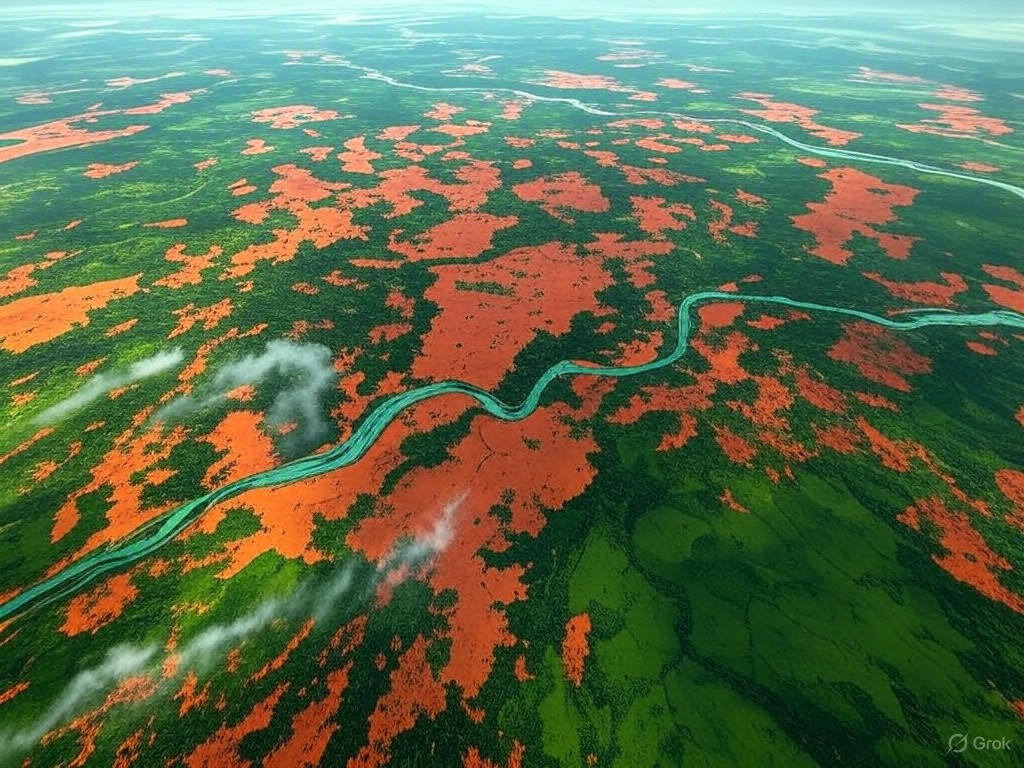Global Biodiversity Loss: UN’s 2030 Targets Falter
In the quiet expanse of a vanishing wilderness, where ancient forests once stood as silent guardians of the earth’s intricate web of life, we witness a profound unraveling. Picture the Brazilian Amazon, its canopy teeming with species that have evolved over millennia, now yielding to the relentless advance of human enterprise. This is not mere poetry; it is the stark reality of our global biodiversity crisis. As the United Nations presses forward with its 2030 biodiversity targets—aimed at halting and reversing nature’s decline—the evidence mounts that these ambitions are falling perilously short. With implications rippling through ecosystems and climate resilience, it is time for a measured, pragmatic approach that leans on free-market innovation and individual stewardship rather than expansive government mandates. This editorial examines the shortcomings of these UN efforts, drawing on reliable data and expert analysis, while advocating for solutions rooted in practical, market-driven conservation.
The UN’s framework, outlined in the Convention on Biological Diversity’s 2022 Kunming-Montreal Global Biodiversity Framework, sets ambitious goals: protecting 30% of the planet’s land and oceans by 2030, restoring degraded ecosystems, and integrating biodiversity into global decision-making. Yet, as we approach the decade’s midpoint, progress lags. A primary reason lies in the framework’s reliance on top-down international agreements, which often falter against the complexities of local economies and national priorities. In developing nations, where biodiversity hotspots like the Congo Basin thrive, economic pressures from agriculture and resource extraction undermine these targets. Without sufficient incentives for private actors, such as farmers or corporations, compliance becomes voluntary at best, ineffective at worst.
This analysis reveals a deeper flaw: the UN’s approach assumes that centralized planning can outpace the dynamic forces of global markets. For instance, biodiversity loss accelerates as populations grow and economies expand, with deforestation rates in biodiversity-rich regions outpacing restoration efforts. According to a 2023 UN Environment Programme report, only 17% of the required land and marine areas are currently protected, far below the 2030 benchmark. This shortfall not only jeopardizes species extinction—potentially one million at risk, as noted in recent studies—but also erodes the natural buffers against climate change. Healthy ecosystems, from coral reefs to temperate forests, act as carbon sinks, mitigating the effects of rising temperatures and extreme weather. Yet, without adaptive strategies that empower local communities and businesses, these environmental assets remain vulnerable.

This satellite image captures the stark contrast between pristine rainforest and cleared land in the Brazilian Amazon, underscoring the urgent need for effective biodiversity conservation strategies.
Evidence from recent years paints a sobering picture. Climate change exacerbates biodiversity decline, with rising temperatures pushing species toward extinction and disrupting food chains. A Wall Street Journal analysis highlights how coral bleaching in the Great Barrier Reef, a UNESCO World Heritage site, has intensified due to warmer oceans, directly linked to insufficient global action on UN targets. Similarly, the World Wildlife Fund’s Living Planet Report 2022 documents a 69% average decline in monitored vertebrate populations since 1970, driven by habitat loss and pollution. These statistics are not abstract; they translate to real-world consequences, such as reduced crop yields in agriculture-dependent regions. In the United States, for example, pollinator decline threatens $15 billion in annual crop value, as bees and butterflies vanish from over-farmed landscapes. The UN’s failure to enforce its own metrics—through mechanisms like national reporting and funding—compounds these issues, leaving gaps that market forces could fill if properly harnessed.
From a broader perspective, the implications of this crisis extend far beyond environmental metrics. Ecosystems form the backbone of global climate resilience, with biodiversity playing a critical role in maintaining stable weather patterns, water cycles, and soil health. As climate change intensifies, degraded environments become hotspots for disasters: floods in deforested watersheds or droughts in over-exploited grasslands. A Nature Conservancy blog post emphasizes that resilient ecosystems could sequester up to 30% more carbon than degraded ones, yet UN targets overlook the economic incentives needed to achieve this. Here, traditional values of stewardship—rooted in the idea that individuals and communities are best equipped to manage their resources—offer a path forward. Instead of layering more bureaucratic oversight, we should draw on historical examples where private initiative preserved natural heritage, such as American conservation efforts in the early 20th century that balanced economic growth with land protection.

This photograph depicts a community-led wetland restoration in the Mississippi Delta, illustrating how targeted, market-based efforts can revive biodiversity and enhance climate resilience.
To address these challenges, a center-right approach emphasizes limited government intervention paired with free-market solutions. Rather than expanding UN frameworks, policymakers should prioritize incentives like tax credits for businesses that adopt sustainable practices—such as certifying timber from responsibly managed forests. In the United States, programs like the Conservation Reserve Program have demonstrated success by paying farmers to restore marginal lands, blending economic benefits with environmental gains. Expanding such models globally could involve international trade agreements that reward countries for meeting biodiversity standards, encouraging innovation without imposing rigid mandates. Private-sector leaders, from agribusiness giants to tech firms, could lead the charge by investing in conservation technologies, such as precision agriculture that minimizes habitat disruption. This not only aligns with free-market principles but also fosters a sense of individual responsibility, echoing the deliberate, self-reliant ethos of traditional American values.
In conclusion, the UN’s 2030 biodiversity targets, while well-intentioned, are faltering due to their over-reliance on global governance and underestimation of market dynamics. As biodiversity loss accelerates, intertwining with climate change to threaten ecosystems worldwide, the path to recovery lies in practical, decentralized solutions. By empowering private actors through incentives and fostering a culture of stewardship, we can build a more resilient environment without overburdening governments or stifling economic progress. The choice is clear: let us move beyond rhetoric to actionable strategies that honor both our natural heritage and the principles of free enterprise. Only then can we ensure that future generations inherit a world where biodiversity flourishes, not as a distant goal, but as a lived reality.

